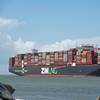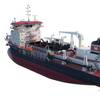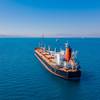Hapag-Lloyd AG remains bullish on the substantial earnings contribution from synergies from CSAV acquisition and OCTAVE cost-cutting programme alongwith further synergies expected due to the merger with UASC.
Hapag-Lloyd closed the 2016 financial year with EBITDA of EUR 607.4 million (previous year: EUR 831.0 million) and an operating result (EBIT) of EUR 126.4 million (previous year: EUR 366.4 million). These figures are taken from the 2016 annual report, which was published today. The Group net result came in at EUR -93.1 million (previous year: EUR 113.9 million).
“We had a very challenging market environment in the first six months of 2016, but were able to improve revenue and results significantly in the second half of the year. Even though we performed relatively well in the industry in 2016, the bottom line is still that this result is not satisfactory,” said Rolf Habben Jansen, Chief Executive Officer of Hapag-Lloyd.
“We expect some market improvement in 2017, but our success will largely depend on our ability to achieve more sustainable freight rates. Longer term, the lack of orders for new builds and the continued high scrapping figures point to a better equilibrium between capacity supply and demand,” continued Habben Jansen.
In 2016, Hapag-Lloyd’s transport volume rose by 2.7% year on year to 7.6 million TEU. The average freight rate was USD 1,036/TEU, which was 15.4% lower than in the previous year (USD 1,225/TEU). Revenue fell from EUR 8.842 billion in the previous year to EUR 7.734 billion in 2016, mainly due to the significant decline in rates.
In 2016, Hapag-Lloyd managed to reduce its transport expenses significantly by 12.3% to EUR 6.364 billion (previous year: EUR 7.259 billion). However, this reduction did not fully offset the decline in the average freight rate.
The noticeable improvements in transport expenses were due to the lower average bunker price in 2016 of USD 210/tonne (previous year: USD 312/tonne) as well as a 6.3% reduction (compared to 2015) in bunker consumption brought about by the use of larger and more efficient ships.
Despite an increase in transport volume, Hapag-Lloyd successfully reduced the costs of purchased services (e.g. hinterland container transport costs; chartering and leasing costs; and port, canal and terminal costs) by 8.3% (compared to 2015). This was primarily due to synergy effects achieved through the merger with CSAV and the OCTAVE cost-cutting programme but also due to market driven cost reductions (e.g. bunker) which will not necessarily be sustainable going into 2017.
The beginning of 2017 is challenging. “Due to long term contracts we have not yet been able to fully capture the recent positive rate development in the spot market while bunker price has increased significantly. We will continue to work hard to make Hapag-Lloyd even more competitive and to build on our strong position. Our efforts will be supported by the expected synergies and the further diversification of our product portfolio due to the merger with UASC,” explained Rolf Habben Jansen.
Based on forecasts for global trade growth (IMF: 3.8%) and global container ship capacities, Hapag-Lloyd anticipates a moderate increase in the average freight rate and transport volume in 2017 (excluding UASC). The preparations for the closing of the merger with UASC are in their final stages. From 2019 onwards, the merger is expected to result in annual synergies of USD 435 million.
This is offset by one-off expenses of around USD 150 million resulting from the transaction and the integration of UASC into Hapag-Lloyd. Final synergy effects from the CSAV merger as well as positive effects from the OCTAVE cost-cutting programme and the Compete to Win project designed to improve revenue quality are also expected for 2017. Under these circumstances, Hapag-Lloyd expects a better EBITDA and EBIT year on year.
“The key areas of focus for us in 2017 will be the launch of our new alliance as at 1 April and the rapid and seamless integration of UASC into Hapag-Lloyd”, said Rolf Habben Jansen.
With equity almost unchanged year on year at EUR 5.058 billion and an equity ratio of 44.6% Hapag-Lloyd possesses a solid balance sheet. With liquidity reserves of around EUR 760 million (including unused credit lines), the Company is securely financed for the future (as at 31 December 2016).










